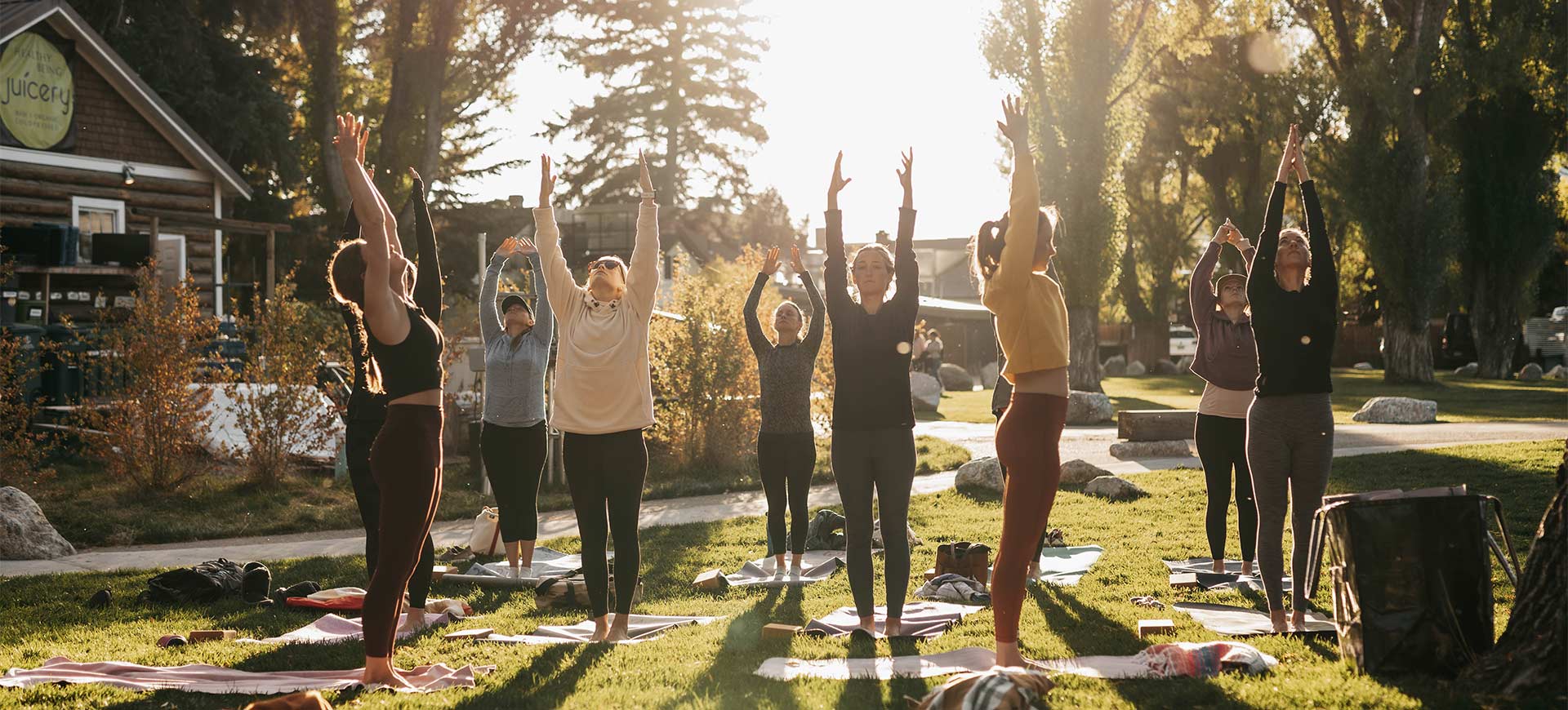
Should You Consider Hosting an Outdoor Yoga Class?
Yoga is much more than physical exercise. It’s a total experience, combining mind, body and spirit, and the environment influences how comfortable you feel throughout it. With that in mind, should you consider hosting your classes outdoors?
Nature has healing properties that complement your practice. However, the right preparation differentiates between an average day of stretching in the park and an elevated experience that puts your fellow yogis in closer touch with the world. Fortunately, a bit of prep work is all you need to create your dream class.
You can’t go wrong if you keep the comfort and safety of your participants foremost in your mind.
Advantages and Disadvantages of Taking Your Practice Outdoors
There are scores of benefits to taking your yoga class outdoors. Of course, there are also things you must plan for — but first, the good news.
The benefits of outdoor classes include greater inclusivity — especially for those who might need and crave yoga the most but sometimes hesitate to join crowded studios. You’re 19 times more likely to contract an infectious illness indoors than outside, so it is a safer option for the majority. Even though the WHO has declared COVID-19 no longer a public health emergency, there are still risks for people with heart disease or compromised immune systems.
Breathing deeply outdoors could help your youngest class members prevent allergies. More than 25 million American adults experience seasonal allergies, but studies show children who grow up in rural areas and spend more time outside are less likely to develop them as adults.
Breathing in certain plant antioxidants could boost immunity among all participants. The phytoncides from plants serve as their defense but activate human germ-fighting cells when inhaled. Additionally, going outdoors helps your body produce natural vitamin D — at least during the sunny months of the year.
What are some other advantages of hosting an outdoor yoga class? Consider these impressive health benefits yoga and nature share, and how doubling up amplifies their healing power:
- Decrease stress: Studies show simply gazing at natural scenes lowers pressure. Breathing deeply and practicing yoga in a natural setting increase the benefits.
- Increased calorie burn: People tend to move more outdoors and the change of venue could result in torching more fat.
- Improved mental health: Going outside has anxiety and depression-busting power, as does yoga. Combine them for a one-two punch of healing goodness.
The Pitfalls of Outdoor Yoga Classes and How to Avoid Them
You do have to take a few precautions when hosting a yoga class outdoors. What should you be sure to keep in mind? These tips will help you avoid the common pitfalls:
- Wear sunscreen and bring extra: It’s one thing to build agni heat through an energizing vinyasa flow. It’s quite another to feel the burn as your skin turns lobster-like. You also can’t guarantee participants will remember, so be a lifesaver and bring extra mineral-based sunscreen for those who forget.
- Keep an eye on the weather: Sudden storms can disrupt your outdoor yoga class. Even high winds can make it uncomfortable. Ensure you have an alternative venue if things get blustery.
- Bring bug spray: Little biting insects can also make outdoor yoga a misery and some species — like mosquitos — can carry nasty germs. Bring some DEET-based spray for yourself and your participants.
- Stay hydrated: High outdoor temperatures and direct sunlight dehydrate you more quickly. Bring plenty of water and advise attendees to fill their bottles before class begins.

Setting Up for an Outdoor Yoga Class
You should also do more to set up for your outdoor yoga class than haul a few mats out in the grass. Your first order of business is cover. Besides lining up an alternate venue if things go awry, ensure there’s sun protection for those who need it.
A pavilion does the trick if you’re practicing at a local park. Otherwise, you might want to invest in a small canopy for those members who don’t like direct light.
Additionally, your participants can struggle to hear you without the echoing acoustics of your studio. Even instructors who don’t typically wear microphones might want one for outdoor use. Find one that pairs with your stereo system for a seamless sound experience.
What about passersby? Check with your regulars about their preferences and comfort before class but consider letting outsiders join in and share the yoga love.
Bask in the Great Outdoors
Hosting an outdoor yoga class can be a healing way to elevate your practice when done right. You can’t go wrong if you keep the comfort and safety of your participants foremost in your mind.
Follow the above tips when setting up your outdoor yoga class. You’ll amplify your practice’s healing power and delight your members.






